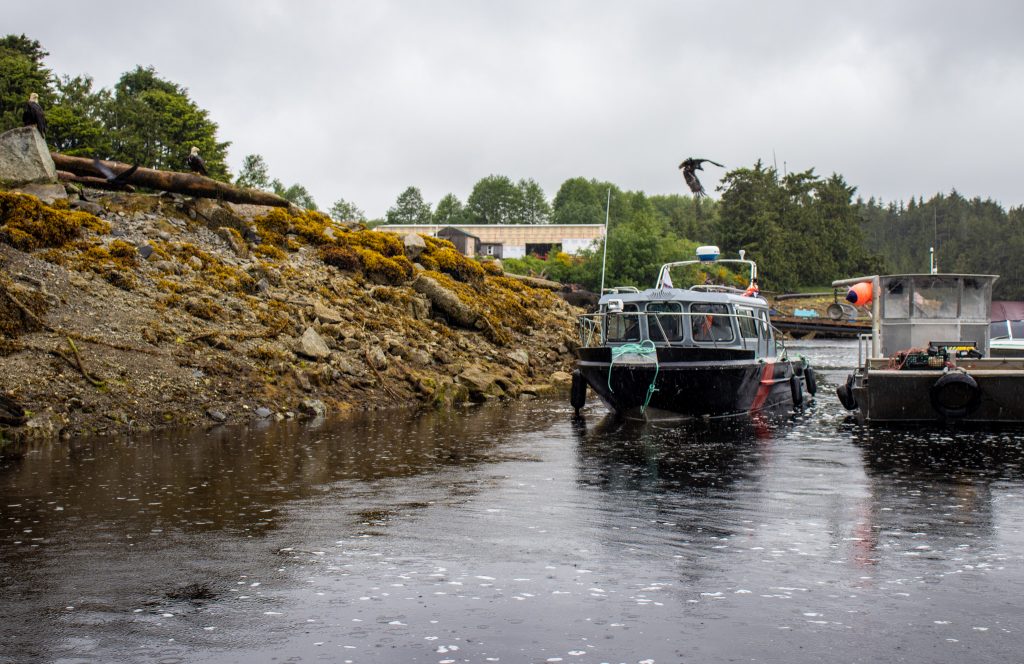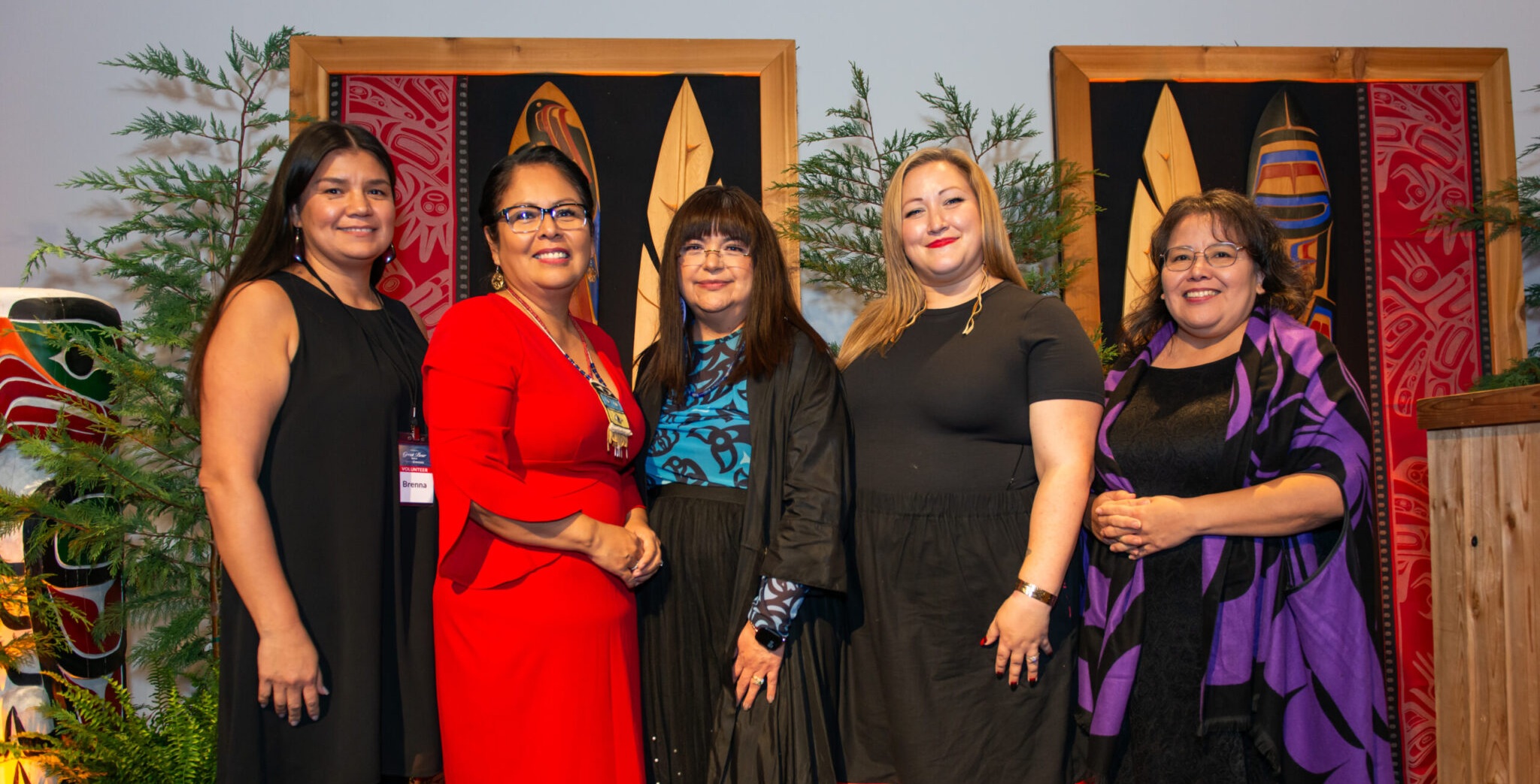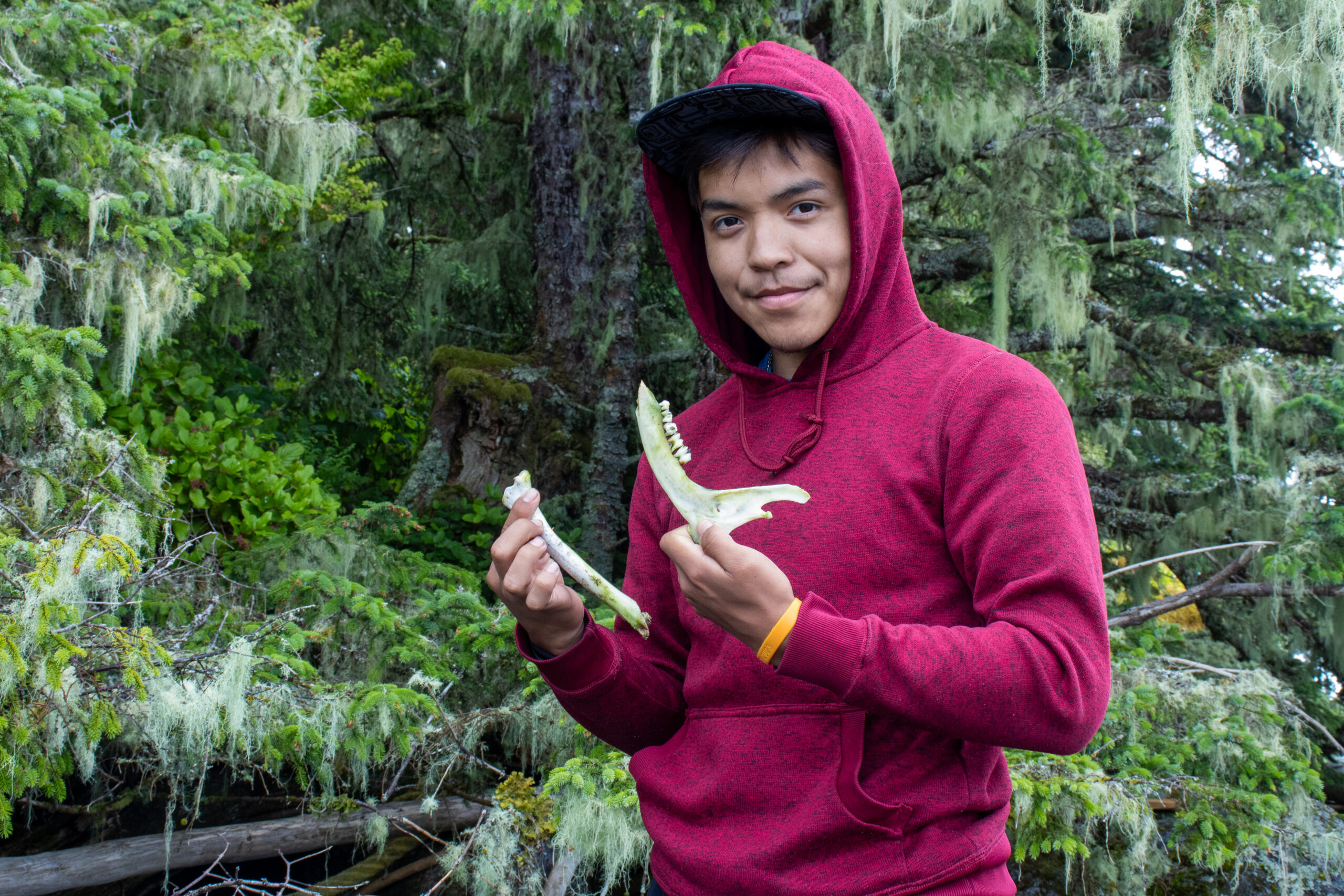Gvuiba Joshua Vickers’ bloodlines run all throughout his Haíɫzaqv territory and across the Coast.
He says he gives thanks to the old ones that safeguarded his family’s stories, culture and origins for the work he’s doing today. In his home territories, Gvuiba works as an Indigenous Guardian, surveying, monitoring, and stewarding the lands and waters, as his people have always done.
Roughly 80 Indigenous Guardian programs operate across the country — some just starting and some well established. Guardians are known as “the eyes and the ears of the land and sea” and work to ensure that resources are sustainably managed, rules and regulations are followed, and land and marine use agreements are respected. Indigenous Guardians are grounded in Indigenous laws and work with scientists and researchers to implement the most advanced stewardship and management models in their home territories.
“Guardians are valuable. The program is valuable to the people. We’re protecting our natural resources,” says Gvuiba as he fishes for spring salmon one June morning in Spiller Inlet. “Being out here and talking to my people… people share because they know I’m a Guardian and they know I’m out here.”
Gvuiba has been working as a Guardian for the past few years, but really his whole life, he says. Every day looks different for him and his team, working out of the Heiltsuk Integrated Resource Management Department (HIRMD). Each morning starts with a debrief with managers, to assess priorities and needs for the day, before the group splits into teams and hits the territory. The Guardians often work outside of the regular 9-5 to respond to spontaneous incidents. The team is sometimes called in for emergency situations, like a recent electric fire that broke out at a sports fishing lodge during the evening. The Guardians were first on scene to make sure the scenario was under control, and revisited the site the following day to check in.
“It’s an ideal job. You’re outside all the time, partaking in different research, and sometimes making impacts that you only realize down the road,” says Gvuiba.
He expresses gratitude to work in a position that allows him to work on his territory, as the land brings back memories, and keeps stories alive and breathing. Safeguarding his stories and everything that comes with that ties into what it means to him to be an Indigenous Guardian.
“I feel totally connected to this place. My heart, my soul, my Spirit belong to this place,” he says.


‘I felt a responsibility’
When Gvuiba isn’t working, he’s fishing, carving, learning about his culture, preparing to potlatch. He says he has seen and been a part of an ongoing cultural resurgence in his community.
“A lot of knowledge is coming back that was suppressed,” says Gvuiba. “Coming back from a handful of people learning from books, elderly ladies that didn’t want to see our culture perish, that’s who we’re thankful to all of the time, that’s why we’re here.”
Gvuiba shares stories of peace treaties in the form of arranged marriages between communities, of debts paid by Chiefs riding to Bighouses in canoes stuffed with eagle down, great shows of white cloud… of doing things the old ways. He speaks of his people traveling, trading, connecting. And he remembers people who “risked it all” to protect his nuyem (oral tradition), his origin stories, his family stories — stories of place, presence, power.
“Sometimes, we forget who we are. Learning our culture is good for the brain, the body, the Spirit — it brings it all together when you start to remember. I was pushed in the direction to learn more from our Chief Toby Moody, who’s an uncle or grandpa to many of us,” he says.
“I’m interested in learning about ancestry and history, because I felt a responsibility.”
Gvuiba acknowledges many people he “bumped into along the way growing up” — people who carried songs and stories from further south, and people like Elroy White, William Housty, Toby Moody, grandpa Don Vickers, his gran, so many members of his family, he says.
“I have a lot of people to be thankful for. Carving influences too, like Captain Carpenter — the most prolific Heiltsuk artist ever — Beau Dick, Marcus Alfred, Wayne Alfred, Mungo Martin, Spruce Martin, all those old carvers, and Ian Reid today,” he says.
“My mom, my aunties, my grandmas, the important ladies, the Native language teachers.”
“Liz Brown, Marina Humchitt, Phylis McKay, and of course, Evelyn Windsor,” Gvuiba’s voice tightens with emotion. “I get choked up talking about her, because that was a big loss. I have a soft spot in my heart for her. Pretty much everything I know I owe to her too… she showed me how to dance, how to weave bark, work with bark.”
In October, 2019, the Heiltsuk Nation celebrated the historic opening of the Haíɫzaqv λiác̓i (Bighouse) in a gathering that welcomed around 4,000 people from near and far. At the opening, the Nation had a chance to share stories, songs, dances, food, and welcome other Nations to do the same. Gvuiba said the whole event felt “like a dream” he “didn’t want to wake up from.”
“The whole carving process… hanging out with other artists and that comradeship… learning something new daily leading up to the opening,” Gvuiba remembers. “I often think about that time before and during… it felt so good to be amongst the Nations that joined us to celebrate and share their cultures and traditions.”
Gvuiba said it’s been hard not to potlatch over the last few years due to pandemic restrictions. But there are potlatches coming up for his community and he and others have been busy preparing, singing, drumming, getting ready to practice and embody all that those before him worked so hard to protect and preserve.


